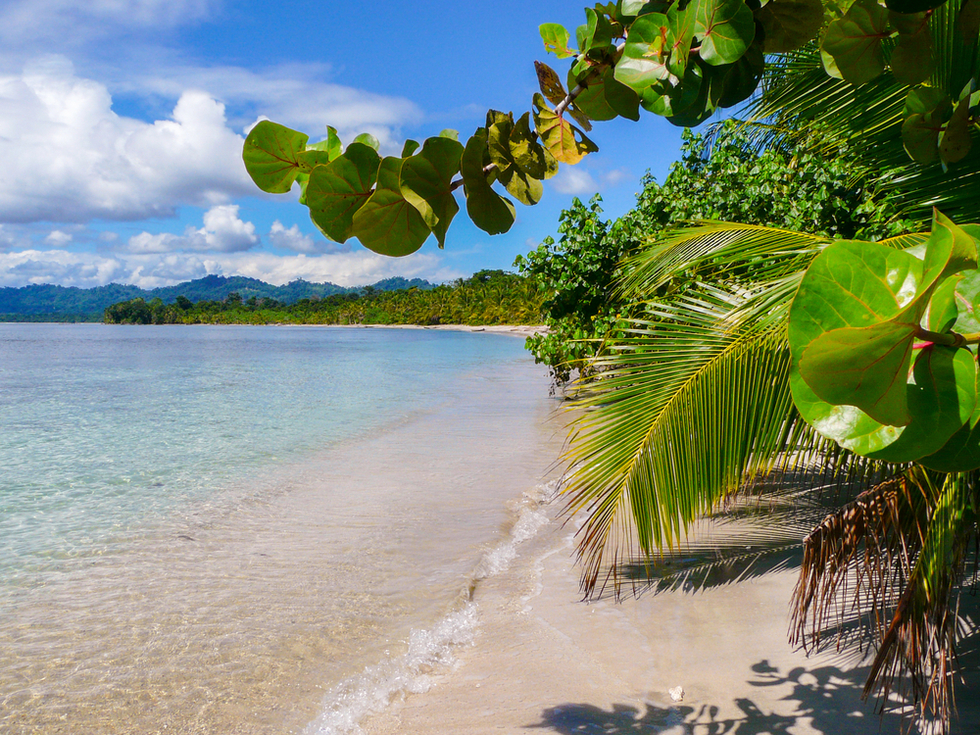Costa Rica's Caribbean coast is a world apart from the rest of the country. The pace is slower, the food is spicier, the tropical heat is more palpable, and the rhythmic lilt of patois and reggae music fills the air. This remains one of Costa Rica's least discovered and explored regions. More than half of the coastline here is still inaccessible except by boat or small plane. This isolation has helped preserve large tracts of virgin lowland rainforest, which are now set aside as Tortuguero National Park ★★ and Barra del Colorado National Wildlife Refuge ★. These two parks, on the coast's northern reaches, are among Costa Rica's most popular destinations for adventurers and ecotravelers. Of particular interest are the sea turtles that nest here. Farther south, Cahuita National Park ★★ is another popular national park, located just off its namesake beach village. It was set up to preserve 200 hectares (494 acres) of coral reef, but its palm tree-lined white-sand beaches and gentle trails are stunning. When you’re ready for nice lodging, fine dining, and a hearty party, the village of Puerto Viejo ★★ is hard to top anywhere in Costa Rica.
So remote was the Caribbean coast from Costa Rica's population centers in the Central Valley that it developed a culture all its own. The original inhabitants of the area included people of the Bribri and Cabécar tribes, and these groups maintain their cultures on indigenous reserves in the Talamanca Mountains. In fact, until the 1870s, this area had few non-Indians. However, when Minor Keith built the railroad to San José and began planting bananas, he brought in black laborers from Jamaica and other Caribbean islands to lay the track and work the plantations. These workers and their descendants established fishing and farming communities up and down the coast. Today dreadlocked Rastafarians, reggae music, Creole cooking, and the English-based patois of this Afro-Caribbean culture give this region a quasi-Jamaican flavor, a striking contrast with Latino Costa Rican culture.
The Caribbean coast has only one major city, Limón, a major commercial port and popular cruise ship port of call. However, the city itself is of little interest to most visitors, who quickly head south to the coast's spectacular beaches, or north to the jungle canals of Tortuguero.
Over the years, the Caribbean coast has garnered a reputation as being a dangerous, drug-infested zone, rife with crime. And though there have been several high-profile crimes in the area and petty theft can be an issue, this reputation is exaggerated. The same crime and drug problems found here exist in San José and most of the popular beach destinations on the Pacific coast. Use common sense and take normal precautions and you should have no problems on the Caribbean coast.
Caribbean Weather
The Caribbean coast has a unique weather pattern. It’s said that there are two seasons: the rainy season and the very rainy season. Whereas you’ll almost never get even a drop of rain in Guanacaste during Costa Rica’s typical dry season (mid-Nov to Apr), on the Caribbean coast it can rain almost any day of the year. The months of September and October, when torrential rains pound most of the rest of the country, are two of the drier and more dependably sunny months here. Visit during these months and you’ll find lower prices and fewer tourists.









